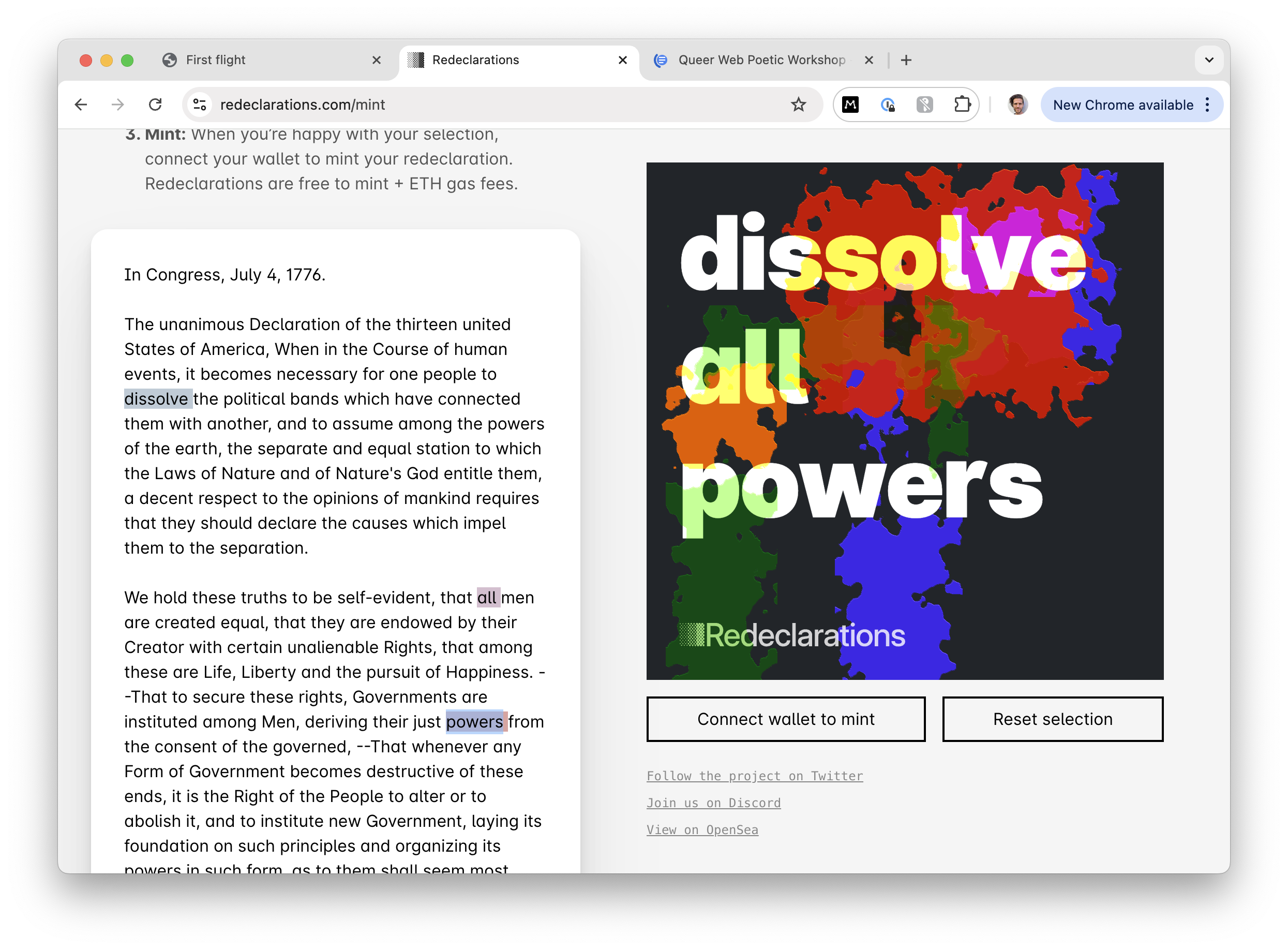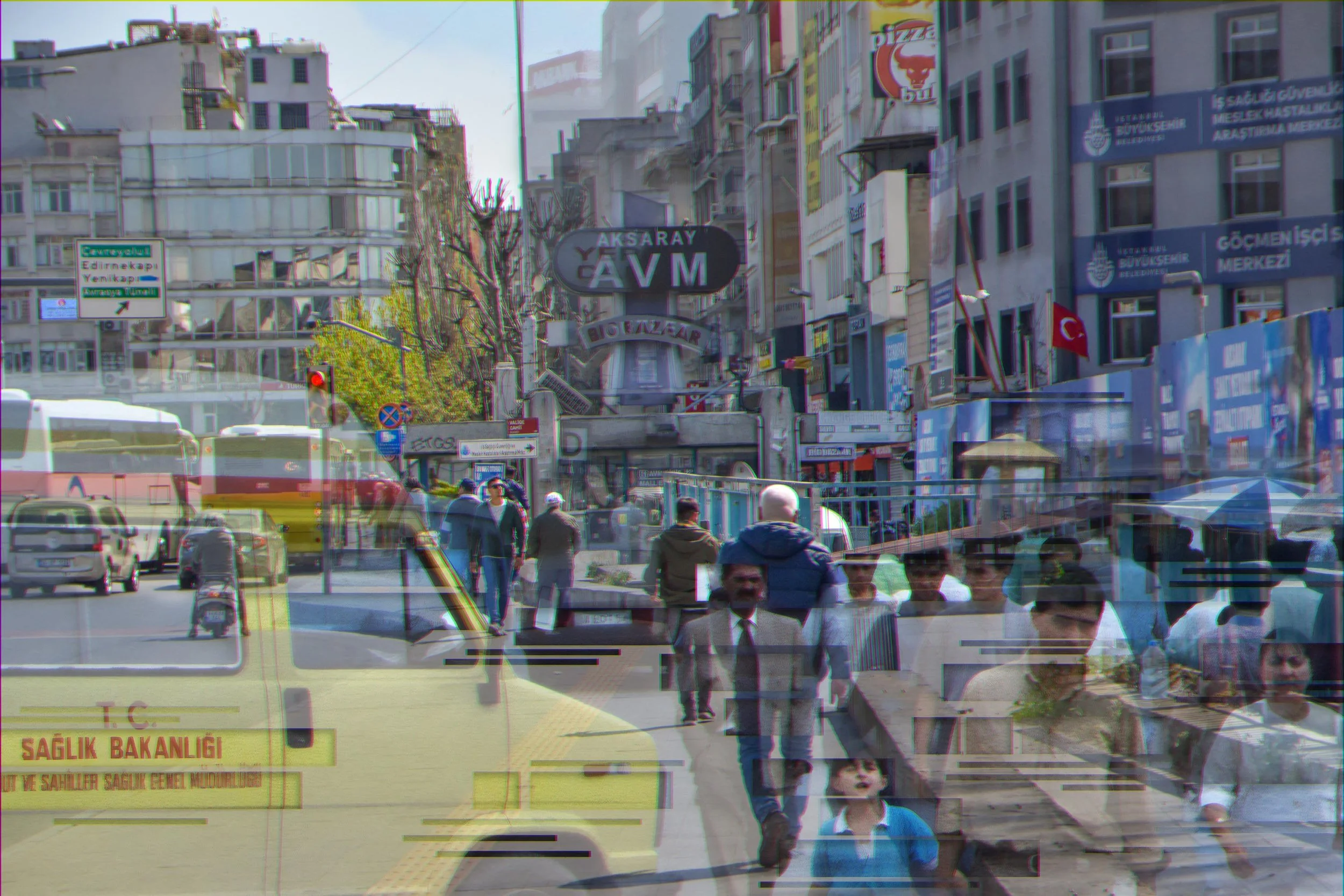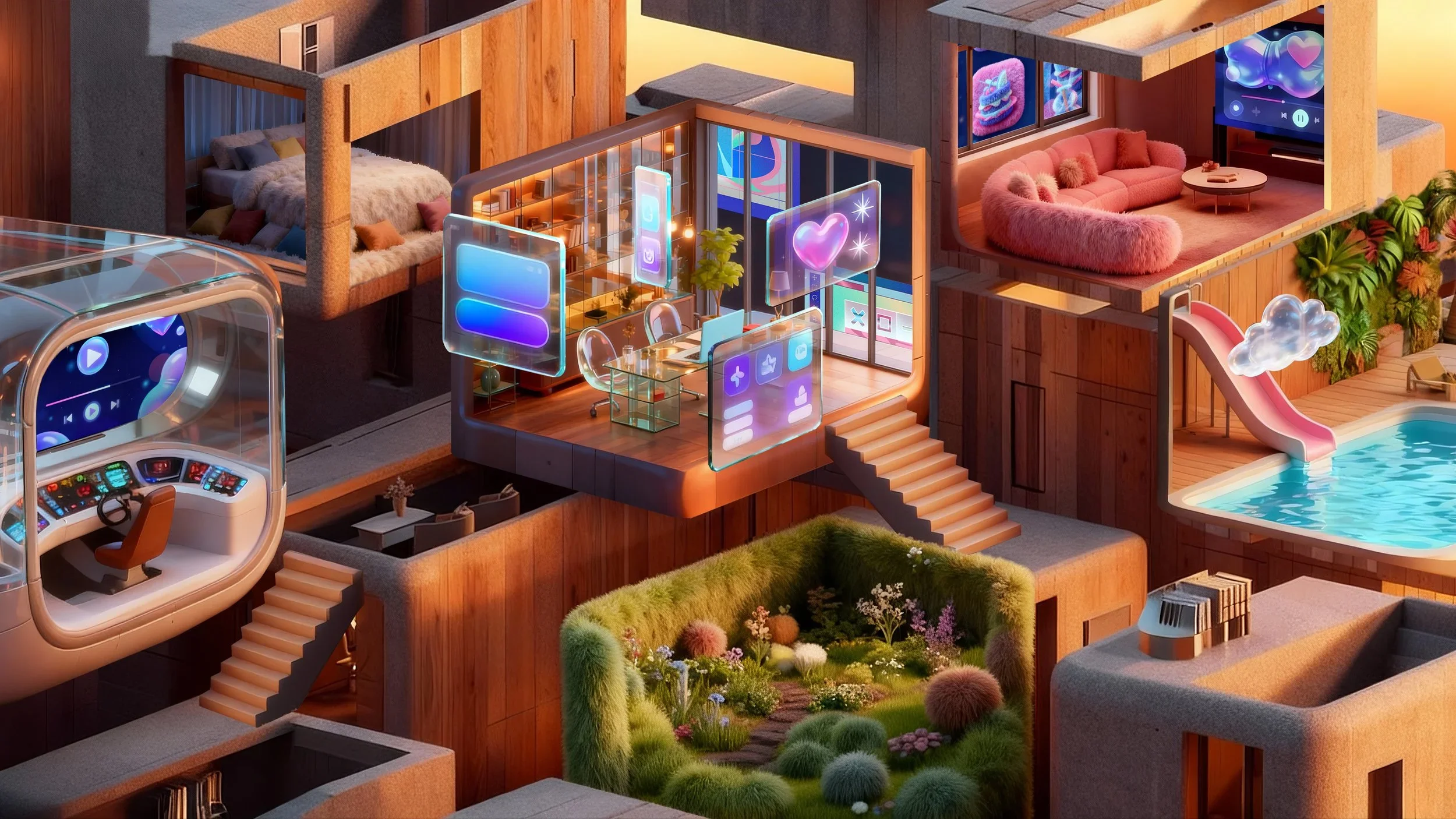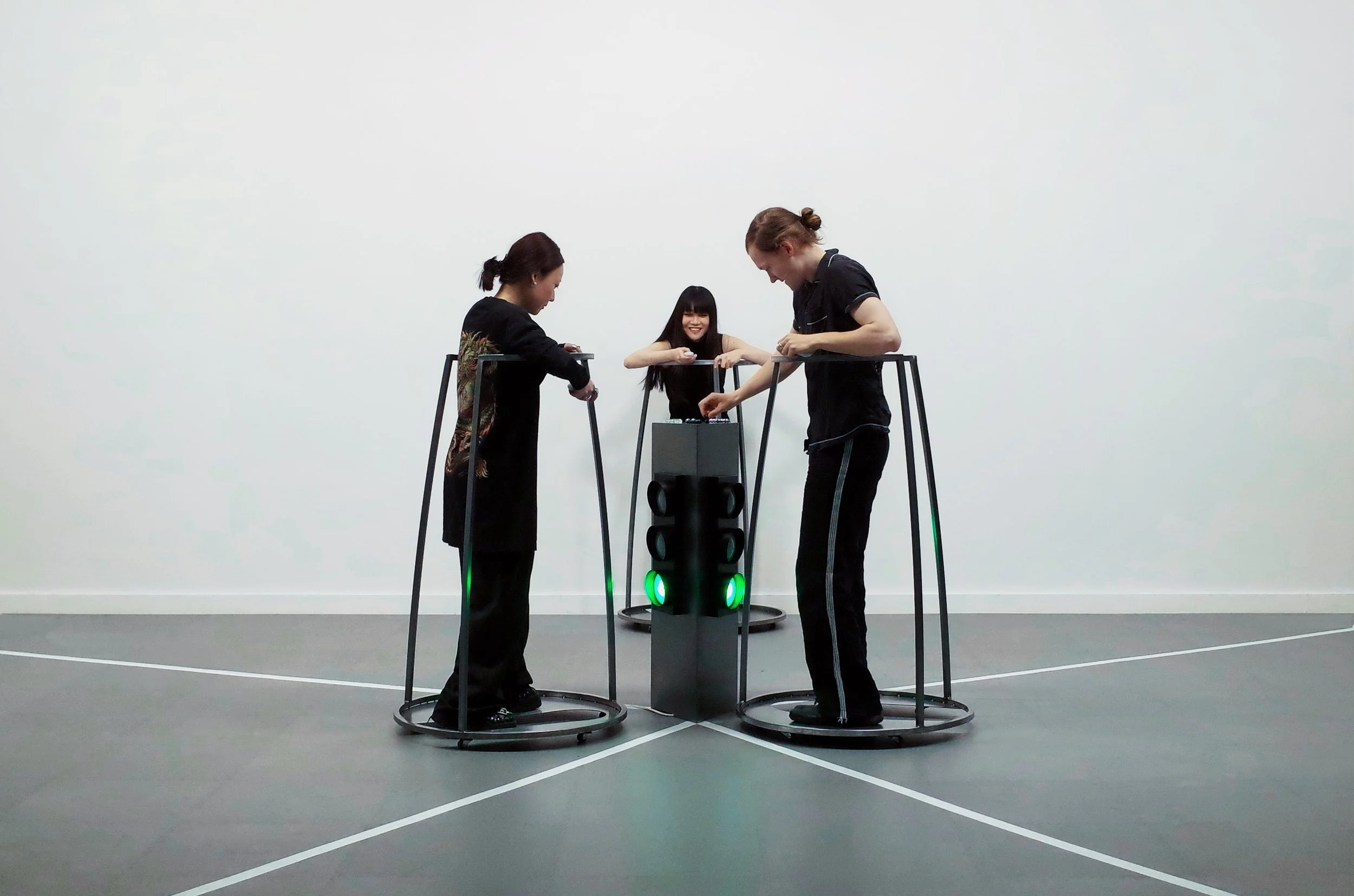10 Questions with Halim Madi
Halim Madi حليم ماضي (he/him/they/them) is a programmer, poet, and modern-day storyteller born in Beirut, Lebanon, who now lives and works across San Francisco, Beirut, and Paris.
As a حكواتي, Halim explores migrant, queer, and cyborg consciousnesses, weaving new understandings from the collisions of disparate worldscapes. Their work collects and performs stories of border-crossing bodies, syncretic glitches, métis outsiders, and transformative spaces that unlock the imagination of new futures. Situated at the intersection of performance, technology, and language, Halim's practice creates a dialogue between art forms.
Halim received the 2024 Robert Coover Award for the best work of electronic literature of any length or genre. They are a 2024 artist-in-residence at Gray Area and Counterpulse. Their HTML poem, "We Called Us Poetry," was recently exhibited at Bergen University's Center for Digital Narrative's More than Meets AI.
Halim Madi - Portrait
INTERVIEW
Let’s start from the basics. Who are you, and how did you first become interested in art?
I’m Halim Madi, a Lebanese poet and programmer doing work at the edge of performance, code, and ritual. I grew up in a lot of silence, political, familial, emotional. In the wake of a civil war, people around me were busy gathering the pieces. I became attuned to what wasn’t being said. Theatre was my first home, I performed for 12 years, fascinated by figures like Ben Vautier and Antonin Artaud, those who made life feel too big to be contained. Art became my way of shaping silence into sound. As a kid, I made fictional websites and cassette monologues. I didn’t call it art back then, but it was my way of asking: what else could be true? I’ve carried that question with me ever since. Over time, my practice has becomeone of seeding secrets in the most reliable way. To be truly heard. To resonate at a deeper level.
Your journey spans Beirut, San Francisco, and Paris. How have these places shaped your identity as an artist and storyteller?
Beirut taught me that everything is haunted. That every word has an echo, every building a wound. San Francisco showed me that technology could be intimate and playful, that code, like poetry, is just another kind of spell. And Paris reminded me to slow down, to question fluency and legibility, to resist being productive all the time.
There’s a chameleonic nature to moving from place to place. I became a local of many cities. My identity became less about choosing and more about holding, grief, play, critique. A weaving. A bothness. A chimera. An all-of-the-above-ness.
Borderline, Performance, 2024 © Halim Madi
Borderline is a web-based performance that reimagines the border as a fluid, evolving line. Blending documentary theater and interactive digital elements, it explores identity and transformation through real-life migrant stories, particularly from the SWANA community.
Your work intersects performance, technology, and language. Can you describe how you approach blending these disciplines in your creative process?
Let me start with Deserve It, a web-based interactive piece that looks like a bureaucratic form but slowly unravels into poetry. You can’t progress unless you answer questions the right way, or find the password. It’s frictional by design. That’s the entry point.
Language, performance, and technology are all strategies of intimacy. They get very close. I don’t separate them because I don’t experience them as separate. Language is already a technology. Performance is already a form of code, loops, inputs, gestures. I don’t “invite” people into transformation, I place them in a structure that requires something from them. Sometimes, it’s a website. Sometimes, it’s a room. Sometimes, it’s a glitch that doesn’t resolve.
I believe the artist doesn’t complete the work, the participant does. Giving them the keys is part of the world-building.
How does your identity as a migrant and queer artist influence the way you conceive and execute your projects?
I move through the world with a kind of double awareness, of visibility and erasure, belonging and exile. That shows up in the work as an insistence on third space, on forms that hold contradiction without trying to resolve it.
Borderline, for instance, imagines a red line appearing across New Beirut, a speculative city born from loss. The line is a rupture in space-time but also a mirror. It’s a forcing function that recontextualizes our present moment in the midst ofnecessary grief. A quiet scream. A demand to see. And I think that’s the work of the migrant, the queer, the border-crosser, literal or figurative, to find desire, delight, and enchantment in the middle of rupture. To look again and call it life.
Redeclarations, Web, 2022 © Halim Madi
Redeclarations transform the US declaration of Independence into poetic artifacts. Through text, performance, and interactive media, it critiques the alienating nature of administrative systems, reclaiming them as spaces of resilience and hope.
We Called Us Poetry, Web, 2024 © Halim Madi
We Called Us Poetry is an interactive piece that reimagines poetry as a collective, evolving entity. Through written text, spoken word, and digital interactivity, participants contribute fragments of their experiences, merging into a communal poetic ecosystem. The work reflects on belonging, memory, and resilience, aligning with my broader practice of using technology and performance to challenge boundaries and foster connection.
What role does programming play in your artistic practice? How do you use code as a tool for storytelling or as a medium in itself?
In Borderline, code is part of the decor, it’s not hidden. In Deserve It, it’s the form. In I Live Here, it becomes the world.
That piece, I Live Here, takes place in the Tenderloin, a neighbourhood in San Francisco often misrepresented or ignored. The audience enters a space transformed by projection and code. It’s not just scenography. It’s a screen-mediated ritual, a reclaiming of our attention. Because that’s what screens do, they mesmerize. Look at someone staring at their phone. That trance. I want to harness that but for something slower, deeper.
Code is both a tool and a metaphor. Sometimes, I write functions instead of monologues. Sometimes, I fine-tune a model instead of writing a script. Programming helps me ritualize logic and then break it. It helps me ask: what systems are we inside of, and how do we make them visible?
Your HTML poem “We Called Us Poetry” was recently exhibited in a digital narrative context. How do you approach the challenge of creating art for virtual or interactive spaces?
It’s a challenge, which is why I’m usually present in the work. Artist as a medium. Artist as guide. We Called Us Poetryis a scroll poem, something you move through like a body. Slowly. Carefully. But I also perform it. Because digital work still needs presence.
This is digital theatre. I’m not here to show off the code, I’m here to make space for the migrant, the mother calling her son, the uncle whose WhatsApp voice message contains long silences where he’s deciding whether or not to ask for help. These are stories that humble the medium.
I believe interaction should invite care. Sometimes that means buttons that hesitate or lines that only appear if you wait.The media shape attention, but the tension must be held by the content. Maybe art is here to undo McLuhan, to say that yes, the medium matters, but so does the secret message we’re passing to each other within it.
Your work often explores the concept of border-crossing bodies and transformative spaces. How do these themes manifest in your recent projects?
In Borderline, the line is the portal. It splits and connects. It asks: what does it mean to grieve together? To lose and still find each other?
More recently, I’ve been asking people to share coordinates of where they “homed” in a city, benches, rooftops, doorways, stoops. Places that hold memory. I started this in the Tenderloin, where people offered stories that remap the neighbourhood entirely. These emotional maps become soft cartographies, records of displacement, care, and reinvention. The border stops being a line. It becomes a question: where did you last feel like yourself?
The idea of “syncretic glitches” and “cyborg consciousness” is fascinating. How do these concepts help you address the intersection of identity, technology, and futurism?
I use “glitch” the way some use prayer, as refusal and as a portal. A syncretic glitch happens when systems fail to compute you, and instead of correcting that error, you let it speak.
Cyborg consciousness is what emerges when you stop trying to be coherent and start living in multiplicity. That’s where futurism begins, not in seamless narratives, but in interruptions.
I’m indebted to thinkers like Bayo Akomolafe, Karen Barad, Julia Kristeva, and Timothy Morton. The weird is knocking at the door, not in disguise but in a gown. It invites us out of cynicism into something strange enough to be true.
Queering Al, Desktop Performance, 2024 © Halim Madi
Queer AI speculates on artificial intelligence embodying queer perspectives. By training AI on queer theory and lived experiences, it critiques heteronormative biases in technology and imagines inclusive futures.
What new forms of storytelling or interdisciplinary collaborations are you excited to explore?
I’m exploring walking-based rituals, stories that move because you do. I’m also interested in performance as an archive: each shows a time capsule, each gesture a trace.
Language preservation is a big part of my current work. I’ve been collaborating with Wikitongues to build language models trained on endangered dialects, co-designed with community members to revitalize what’s nearly lost.
Beyond that, I’m obsessed with secrets, how to seed them. I read a lot about habit formation and the biology of epiphany. Much of my life is structured around practice, thinkers like Sloterdijk and Nietzsche shaped how I view routine, not as discipline but as tuning. An epiphany? That’s a neural disruption. A spiritual mutation. Performance is a gentle invasion. Technology is a groove-maker. Poetry is the spell that holds it all together.
And lastly, as we are at the beginning of 2025, what is your biggest goal for the new year?
To make something that doesn’t scale. To build a work that is deeply, specifically useful to a small group of people. To dismantle what’s broken, botched narratives, lazy metaphors, and to edify what still works: witness, presence, care.
I want to spend more time in physical rooms. To collaborate in ways that feel like friendship. And I want to stay close to the question that started all this: what else could be true?
Artist’s Talk
Al-Tiba9 Interviews is a curated promotional platform that offers artists the opportunity to articulate their vision and engage with our diverse international readership through insightful, published dialogues. Conducted by Mohamed Benhadj, founder and curator of Al-Tiba9, these interviews spotlight the artists’ creative journeys and introduce their work to the global contemporary art scene.
Through our extensive network of museums, galleries, art professionals, collectors, and art enthusiasts worldwide, Al-Tiba9 Interviews provides a meaningful stage for artists to expand their reach and strengthen their presence in the international art discourse.
